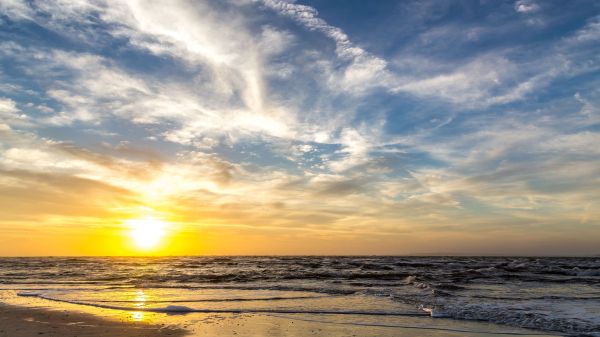Making Florida Home

During Black History Month, we want to share the inspiration and strength of regional, place-based initiatives that address Black history in nature and relate to this year’s theme, The Black Family: Representation, Identity and Diversity.
In "An African-centered Approach to Land Education," Salvotore Engel-DiMauro and Karanja Keita Carroll encourage environmental education to engage with insights from Africana Studies and Geography. Engel-DiMauro and Carroll write:
Every now and then, there are attempts, for example, to signal the importance of the historical presence of African Diaspora communities, but typically this is by way of cemeteries or slave plantations, as if African people never taught ‘whites’ anything, never imparted cropping system knowledge, never contributed to the actual shaping of a landscape through such activities as farming, agricultural innovations and much else. Such ideological terms and silences buttress a view of the world that justifies the annihilation of other peoples and with it other ways and possibilities of relating to land, environment and place.
In this blog post recognizing Black history in nature, we visit how Black Floridians have navigated land and sea, created refuges and resorts, and protected and painted the landscape of the Sunshine State.
Fort Mose
In 1687, a group of eight men, two women and a three-year-old child traveled hundreds of miles down South, traversing swamps and tropical forests to arrive in St. Augustine. Why? Rumors were that it was a place of freedom for those escaping British plantations, provided the men enlist in the Spanish militia and convert to Catholicism. The rumors were true, and by 1738, Fort Mose was a legally sanctioned community of free Black people. Recovered documents tell us that in 1759, 22 palm thatch huts housed 37 men, 15 women, and 15 children within Fort Mose, which was surrounded by a moat planted with prickly Spanish bayonet. Nearby were fields of corn, tamed horses, and a saltwater creek used for fishing.
In August of 1763, the Spanish militia ceded Florida to Britain and most of the Black residents joined the Spaniards in evacuating to Cuba on a schooner named “Nuestra Señora de los Delores” (Our Lady of the Sorrows). Twenty years later, Florida was ceded back to Spain through the Peace of Paris, but in 1819, the Adams-Onis Treaty transferred the land to the United States. This time, Black residents escaped to the Bahamas in dugout canoes in a migration called the “Saltwater Underground Railroad.” Bahamas-native, Georgia-residing Stefan Moss has created a virtual interpretive tour to retrace this journey.
Today, Fort Mose lies on the National Register of Historic Places, and is a part of Florida’s Black Heritage Trail and the National Park Service’s National Underground Railroad Network to Freedom. Although a marshy landscape now covers any physical remnants, the Fort Mose Historical Society is fundraising to build a fort replica. In the meanwhile, it is perhaps beautifully symbolic that Fort Mose has become an important place for diverse migrating birds to feed and rest.
North Star Legacy Communities
The original Juneteenth, June 19, 1865, is when Union soldiers arrived in Galveston, Texas to declare the end of slavery; however, it was one month prior, on May 20, 1865, that Florida residents were notified. To this day, May 20th is a celebrated holiday of community and freedom for Floridians, ever since previously enslaved African Americans gathered together on the first anniversary for a picnic at Bull's Pond (now called Lake Ella) in Tallahassee, Florida.
Following emancipation, several self-sufficient African American communities formed. Despite racist policies and hurricane damage, these communities, known today as North Star Legacy Communities, have continued to resiliently survive. In 2019, Florida State University's Department of Urban & Regional Planning began a collaborative project with support from Florida Agricultural and Mechanical University professor Dr. Sandra Thompson and the Florida Department of State to document the oral history of North Star Legacy Communities through fieldwork and community engagement.
Although North Star Legacy Communities are no longer closed loops of self-sufficiency, the agrarian traditions carry on at Renaissance Park, a 40-acre wilderness park and living history museum directed by community leader Danny Sylvester. The park hosts camping sites, educational retreats, and yearly festivals that celebrate African American rural customs such as hog dressing, soap making, and syrup making.
American Beach
Over on Amelia Island, the American Beach Museum celebrates the history of American Beach, an oceanfront oasis built by A. L. Lewis, Florida’s first African-American millionaire. Visited by families and celebrities such as Zora Neale Hurston and Ray Charles, American Beach provided a safe space for recreation and relaxation and was one of very few beaches that African Americans could visit prior to the passage of the Civil Rights Act.
Hurricane Nora dealt a massive blow to American Beach, and the desegregation of public beaches decreased demand. In 1977 however, Lewis’ great granddaughter, MaVynee Oshun Betsch, also known as the “Beach Lady,” retired from international opera singing and returned to American Beach to ensure its historic preservation. Alongside massive advocacy success in establishing the American Beach Museum and ensuring protective landmark status of the dunes, Betsch led communal conservation efforts: she created signage to spread awareness of sea turtle eggs and encouraged the planting of native wildflowers. Learn more about Betsch in this incredible oral history interview.
The Highwaymen
Considered the “Last Great American Art Movement of the 20th Century,” the Highwaymen were a group of 26 African American landscape artists in Florida working primarily during the 1950s–1970s. The Highwaymen created over 200,000 paintings and peddled door-to-door throughout Florida, transporting their artwork in the trunks of their cars. Although they painted en plein air, the Highwaymen created vibrant, idyllic scenes rather than lifelike representations. These paintings particularly appealed to tourists, who wanted something by which to remember the fantastic weather, wildlife, and sunsets of the Sunshine State. As development reduced the wild landscape of Florida, the popularity of Highwaymen paintings waned, but contemporary collectors and art historians today applaud the significant artistic legacy of the Highwaymen.
Brooksville Agricultural and Environmental Research Station
In 2015, USDA Agricultural Research Service transferred 3,800 acres of land in Brooksville to Florida Agricultural and Mechanical University, a historically Black university with one of the best agricultural programs in the country.
This transfer is one of the largest in history to a historically Black university, and will make a historic impact on the town of Brooksville, which is only about 7,000 acres in size. Brooksville, which remains to be named after Preston Brooks, the pro-slavery congressman who brutally attacked abolitionist Senator Charles Sumner with a cane, carries a painful history of lynchings and segregation.
The land will now be used to advance equity and sustainability—the training of new and beginning minority, veteran, and female farmers will be prioritized, as well as organic farming practices.
Want to learn more? Visit the first post in this series, Pennsylvania: Healthy Roots and Sweet Maple Sap.
Are you a part of environmental education efforts in Florida?
Connect with our affiliate, the League of Environmental Educators in Florida.

